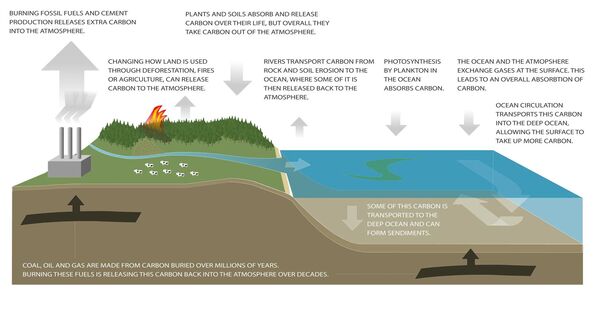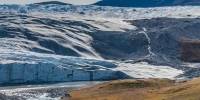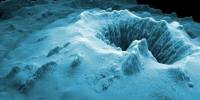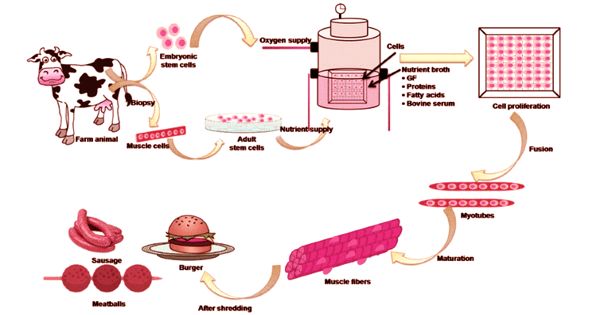For hundreds of millions of years, the average temperature of Earth’s surface has fluctuated by little more than 20° Celsius, allowing life to thrive on our planet. To sustain such steady temperatures, Earth appears to have a ‘thermostat’ that regulates atmospheric CO2 concentrations across geological timescales, regulating world temperatures. The erosion and weathering of rocks are crucial components of this ‘thermostat.’
A team led by LMU geologist Aaron Bufe and Niels Hovius from the German Research Centre for Geosciences has now modeled the influence of these processes on carbon in the atmosphere. Their surprising result: CO2 capture through weathering reactions is highest in low-relief mountain ranges with moderate erosion rates and not where erosion rates are fastest.
Weathering occurs when rocks are exposed to water and wind. “When silicates weather, carbon is taken from the environment and then precipitated as calcium carbonate. In contrast, weathering of other stages, such as carbonates and sulfides or organic carbon stored in rocks, produces CO2. According to Hovius, these processes often occur significantly faster than silicate weathering. As a consequence, the impact of mountain building on the carbon cycle is complex.”
When silicates weather, carbon is taken from the environment and then precipitated as calcium carbonate. In contrast, weathering of other stages, such as carbonates and sulfides or organic carbon stored in rocks, produces CO2.
Aaron Bufe and Niels Hovius
Weathering model shows common mechanisms
To address this complexity, the researchers used a weathering model to analyze fluxes of sulfide, carbonate, and silicate weathering in a number of targeted study regions – such as Taiwan and New Zealand – with large ranges in erosion rates. “We discovered similar behaviors in all locations, pointing to common mechanisms,” says Bufe.
Further modeling revealed that the link between erosion and CO2-fluxes is non-linear, but CO2 collection by weathering peaks at an erosion rate of about 0.1 millimeters per year. When rates are low or high, less CO2 is sequestered, and some CO2 may be released into the atmosphere. “High erosion rates like in Taiwan or the Himalayas push weathering into being a CO2 source, because silicate weathering stops increasing with erosion rates at some point, whereas the weathering of carbonates and sulfides increases further,” according to Bufe.
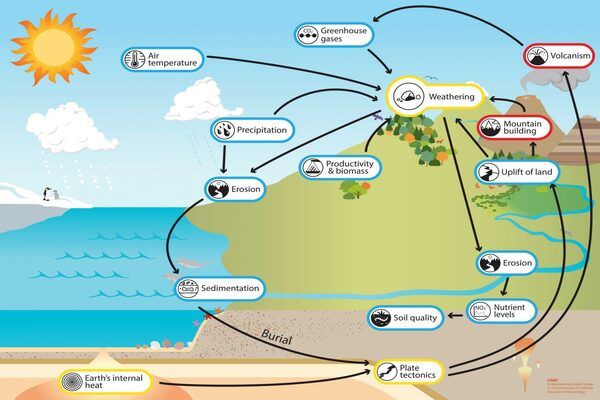
The relationship between rock weathering, climate, and carbon sinks is complex but significant. Low-relief mountain ranges indeed play a role in the global carbon cycle, primarily through a process called chemical weathering. Overall, while low-relief mountain ranges may not exhibit the dramatic topography of taller mountain ranges, they nonetheless play a crucial role in the global carbon cycle and climate regulation through their capacity for extensive chemical weathering and carbon sequestration.
In landscapes with moderate erosion rates of roughly 0.1 millimeters per year, rapidly weathering carbonates and sulfides are mostly depleted, whereas silicate minerals are abundant and weather well. Where erosion is even slower than 0.1 millimeters per year, only a few minerals are exposed to weathering. Low-relief mountain ranges, such as the Black Forest and the Oregon Coast Range, are thus the most significant CO2 sinks, as erosion rates approach the optimum.
“Over geological timescales, the temperature to which Earth’s ‘thermostat’ is set therefore depends strongly on the global distribution of erosion rates,” according to Bufe. Bufe believes that future research should take into account organic carbon sinks and weathering in floodplains to better understand the effects of erosion on the Earth’s climate system.
